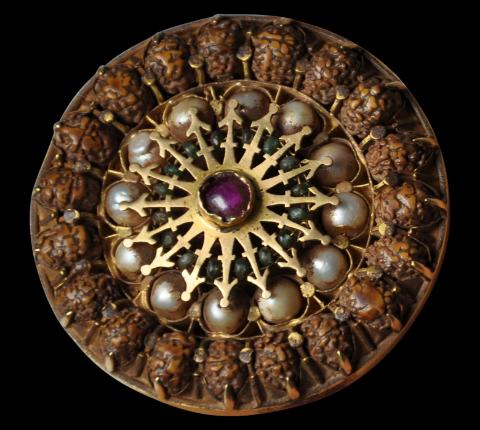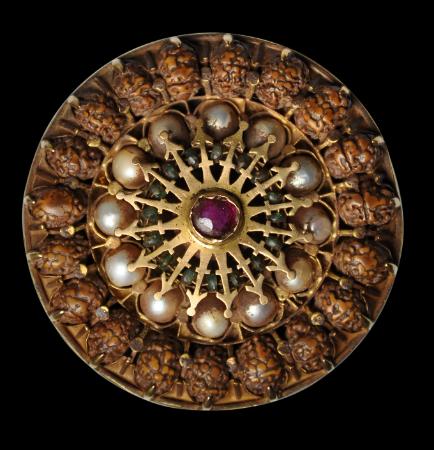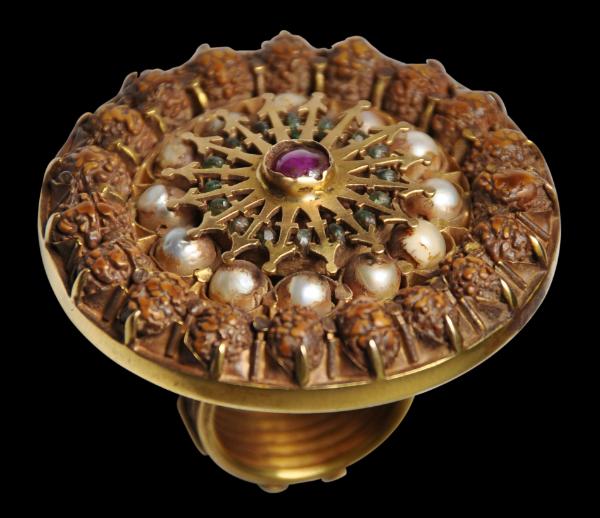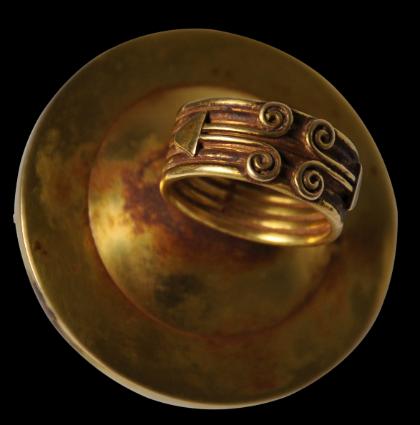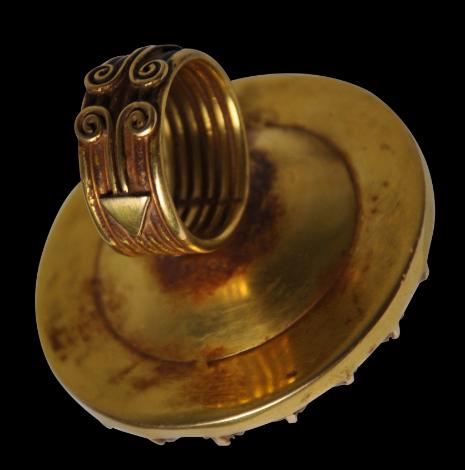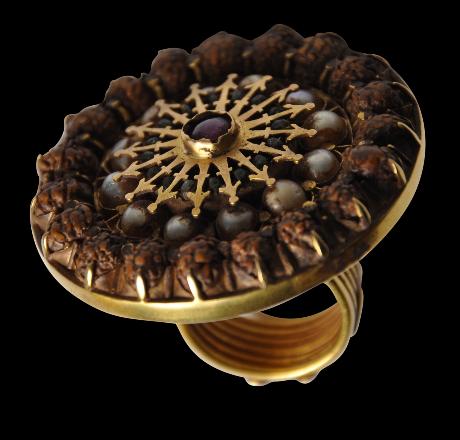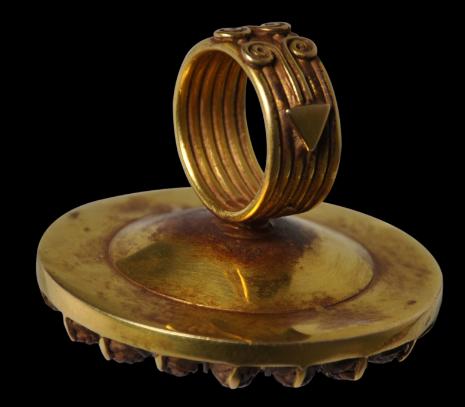
South Indian Temple Jewellery
Temple Gold Ring Set with Rubies, Emeralds, Pearls & Rudraksha Seeds
South India
18th-19th century
diameter of bezel: 4.5cm, inside diameter or hoop: 1.9cm, weight: 57g
This spectacular gold ring set with twelve large freshwater pearls, 19 rudraksha seeds a central ruby and sixteen tiny emerald beads, was commissioned as temple jewellery to adorn the hand of a statue of a deity during a South Indian temple festival.
The large, heavy bezel, is in the form of a marigold flower head with a central radiating design of flat gold segments nestled between which are emerald beads.
The gold hoop or band of the ring is ribbed and with beautiful applied spiral and triangle motifs, all in solid gold.
The use of pearls and precious stones with rudraksha seeds in temple jewellery is unusual and rare. The rudraksha seed is the stone of the fruit of the utrasam tree and is believed to be sacred to Shiva. The name ‘rudraksha’ means ‘eye of Rudra’, an ancient name for Shiva. The seeds are made into beads and then worn as rosaries, necklaces and bracelets by Shaivite devotees and priests.
Gold is imbued with a spiritual component in much of India. It is a symbol of the sun and also associated with Lakshmi, the goddess of wealth. Indians, rich or poor, all tried to have at least a small quantity of gold even if just a simple pair of earrings, for gold was coveted. And traditionally, Hindus would place a small piece of gold in the mouth of the departed as a symbol of the immortality of the soul and as payment to Yama, the god of death, for shepherding the soul to the hereafter (Bala Krishnan et al, 2005, p. 17).
According to Ollemans (2013), the kings of India were believed to be descended from the gods and they paid extravagant tribute to the deities by decorating them with gold and other precious materials. Deities were humanised: they were bathed and fed as if they were living beings, and adorned with all manner of jewellery. The more a deity wore, the more powerful and sacred it became. Once the deities were so embellished and humanised, then the kings ordered extravagant gold jewellery for themselves that mirrored the deities, thereby elevating themselves to the level of the deified. The demand for gold was immense and the goldfields of India were exhausted so that gold needed to be imported from beyond the subcontinent.
The item is in excellent condition but with clear signs of significant age and use. The rudraksha beads have pleasing and glossy wear from ritual handling.
References
Bala Krishnan, U.R. et al, Icons in Gold: Jewelry of India from the Collection of the Musee Barbier-Mueller, Somogy, 2005.
Filliozat, J, Parures Divines du Sud de l’Inde, Publications de l’Institut Français d’Indologie, 1966.
Ollemans, S., ‘Of gold, gods and men: jewellery in India’, in Arts of Asia, November-December 2013.
Provenance
private UK collection
Inventory no.: 2474
SOLD
